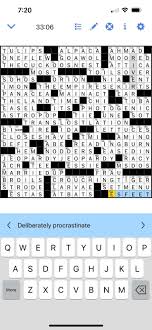Decoding the NYT Crossword Clues

Introduction
The New York Times crossword puzzle is a beloved institution that has captured the hearts and minds of puzzle enthusiasts for decades. With its complex clues and clever wordplay, it presents a unique challenge that not only entertains but also stimulates the brain. Understanding the various types of clues and how to tackle them can greatly enhance the solving experience, making it more enjoyable and satisfying.
The Structure of NYT Crossword Clues
NYT crossword clues vary in style and complexity, often requiring both lateral thinking and general knowledge. Clues can be straightforward, where the answer is directly indicated, or they can be cryptic, involving puns or double meanings. For instance, a clue like ‘Bird that can’t fly’ might lead to ‘EMU’, while a more whimsical clue could play on words, leading to ‘PINE’ for ‘Tree that’s also a timepiece.’
Common Types of Clues
There are several common types of clues found in the NYT crossword:
- Definition Clues: These clues are straightforward and often describe the answer directly, such as ‘Large African Mammal’ for ‘ELEPHANT.’
- Wordplay Clues: These require thinking outside the box. For instance, ‘Wound on the leg?’ for ‘KNEE.’
- Abbreviation Clues: Some clues use common abbreviations, which can be tricky. An example could be ‘U.S. City (abbr.)’ for ‘NYC.’
- Theme Clues: Many puzzles feature a hidden theme which connects multiple clues, adding another layer of challenge.
Tips for Solving NYT Crossword Puzzles
To master the NYT crossword, here are a few helpful strategies:
- Start with the easy clues: Fill in the answers you know first. This provides a base to work from.
- Look for common words: Certain words and phrases recur in crosswords, so familiarising yourself with these can help.
- Practice regularly: The more you practice, the better you’ll become at recognising patterns and solving strategies.
- Use online resources: Websites and apps can provide hints or explanations for particularly tricky clues, serving as a valuable learning tool.
Conclusion
The NYT crossword is more than just a weekly puzzle; it is a blend of linguistic artistry and intellectual challenge. Understanding its clues and honing your skills not only augments your enjoyment but also builds a community among fellow puzzle enthusiasts. As more people engage with crosswords, it is likely we will see innovative formats and themes emerge in future puzzles, making the journey even more exciting for solvers around the world.
